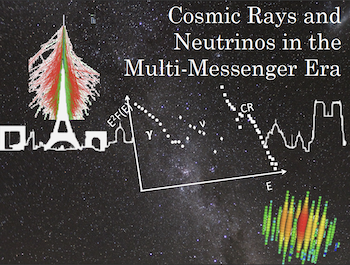Orateur
Description
Gamma-Ray Bursts (GRBs) have historically been regarded as one of the prime potential sources of (ultra-high-energy) cosmic rays and astrophysical neutrinos. They can occur following the collapse of a super-massive star or the coalescence of a binary neutron star system. In both cases, a compact object is formed, from which a highly-relativistic jet is subsequently expulsed. In terms of their emitted electromagnetic power, GRBs are unrivalled by any other class of cosmic transients. If hadronic acceleration takes place in GRB jets, a signal could potentially be observed by current neutrino telescopes, such as the IceCube detector.
GRBweb
To enable studies looking for multi-messenger counterparts, we have composed a comprehensive catalogue of GRBs, called GRBweb. This catalogue pools observations by dedicated missions, such as Fermi and Swift, with observations from gamma-ray satellites in the IPN network and follow-up studies reported via GCN circulars. After unifying the data format, a summary table is composed, grouping all available data per GRB. GRBweb is updated on a weekly basis and publicly available at https://icecube.wisc.edu/~grbweb_public. To ensure user friendliness, the web interface also provides examples on how to load the data and information on the data format and resources that were used.
Precursors
While this catalogue houses all information on GRB prompt emission, another phase of particular interest is that of the precursor flashes that precede $\sim$10% of all GRBs. During the precursor stage, the large density at early times could enhance hadronic interactions with respect to the prompt phase. As a result, GRB neutrinos could predominantly come from the precursor stage. To allow such correlation studies, we composed a precursor catalogue by analysing 11 years of Fermi-GBM data. A Bayesian block algorithm was used to identify statistically significant excesses of gamma radiation before the onset of the prompt emission. A total of 217 GRBs with precursor emission were identified out of 2364 bursts. The temporal properties and light curves of these events can be accessed via GRBweb.
Follow-up studies
In this poster, we present a first application of the presented GRB (precursor) catalogue. By analysing the statistical properties of the precursor sample, we uncovered a novel feature in their temporal characteristics, potentially indicating the existence of two progenitor source classes. Follow-up studies to further investigate this bimodality are encouraged.
| Related session | Multi-messenger |
|---|

